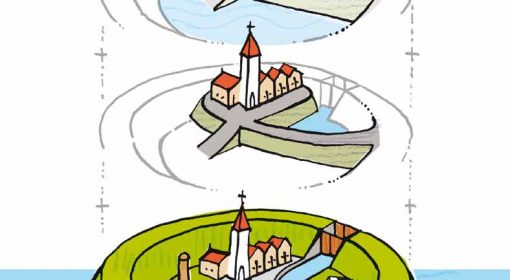Modern society consumes large amounts of energy, which is mostly supplied by fossil fuels. However, these fuels offer only a limited energy supply and their combustion has multiple negative effects on the global climate. Therefore, it is important to be on the lookout for alternative sources/processes of energy production.
It is in this context that Dutch researcher Jan Post has been working on a concept that has come to be known as ‘Blue Energy.’ His research focuses on the process of “electricity production from salinity gradients by reverse electrodialysis.” In simpler terms, this is a method of producing clean power by mixing saltwater and freshwater. When the two meet, they blend until the salt concentration becomes uniform throughout. This process releases energy, which can be tapped, stored and transmitted.
The Netherlands has a number of areas where saltwater and freshwater meet. A good (and big) example is the 30-kilometer stretch over which the Afsluitdijk (Closure Dike) divides the Lake Ijssel (freshwater) from the Wadden Sea. The iconic dike was constructed beteen 1927-33 as part of the Zuiderzee Works: a system of dams, land reclamation and water drainage structures that are among the Seven Wonders of the Modern World. The Afsluitdijk served to dam off the Zuiderzee and turn it into the IJsselmeer, a fresh water lake. The multifunctional structure also serves as a high-speed transport corridor.
The 80-year old dike is up for reconstruction, and Post sees this as a big opportunity to take the Blue Energy concept out of the lab and scale it up. He contends that there is scope for developing a Blue Energy power station on the new dike. With that, the new Afsluitdijk would be able to generate 200 megawatts of power (enough to power three provinces in the north of The Netherlands), adding to the multiple functions of its current form. And Post has got his award-winning research to back his recommendations. (Watch the video below for further explanation on the research). For more info, please visit the websites of the research school SENSE that has recognised Post’s work, and the research institute Wetsus that he is associated with.
Here you can see recent photo’s of the world’s first pilot Blue Energy plant in local Dutch news papers.
More info/ Related links:
Please help us add to the list! Share what you know of in the Comments section below
